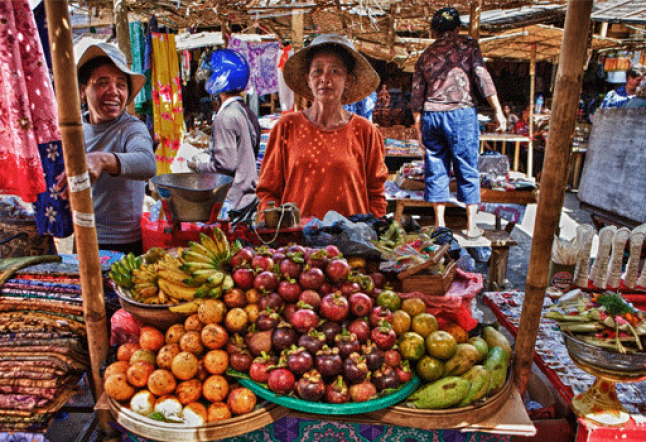understanding price discrepancies in bali

My husband handed me the receipt as we left the restaurant’s payment kiosk in downtown Denpasar. We squeezed past the drivers, laborers, and other locals waiting patiently on plastic chairs for their takeaway, which is cheaper than dining at a table. I scanned the flimsy page until I landed on the word. There it was in black and white, in clear, precise script: “Bule.”
Weren’t those four letters proof positive, a vindication even, of the vague suspicion that hovers over every transaction? If you aren’t Indonesian, expect to pay more.
Perhaps because my belly was filled with a generous portion of spicy soto and babi guling, or maybe I have just adapted to my place in this culture, I was a little more than bemused. I doubt I would have been as sanguine a few years ago when I first arrived in Bali. Then again, I probably wouldn’t have understood then that “bule” referred to me: Foreigner. And I definitely would have failed to comprehend that it meant my lunch was costing me more than it did the Indonesian diners.
How could this be? Charging me more for the exact same meal, wasn’t that blatant discrimination? How unjust! How unfair!
Eventually, my suspicions about flexible pricing were confirmed. I couldn’t help but conclude that differential pricing was the norm. Even my children’s school was regularly stipulating one price for Indonesian families attending an event and another for expat families, regardless of actual income.
But it took a little longer for me to discern a sliding scale, more complex than merely Bule v. Local. Go to Waterboom, Bali Treetops and many hotels, flash your KITAS (long term business visa) and get a price break. This special status seems to imply you have more money to spend than a local, but not as much as a tourist. Peculiarly unfair, perhaps, if your income is earned in the West and potentially inadequate if your income is earned here. A
KITAS isn’t the only wrinkle in the bule-local dichotomy. Children apparently also qualify for a lower price. The neighbourhood ice cream vendor, for example charges me more than he charges my kids for the very same treat (provided I am not around when they buy it) yet they are just as “bule” as me!
When I came to Bali, I chose to leave San Francisco’s high cost of living behind me (an option not available to the vast majority of Balinese). So perhaps it makes sense for the Balinese to take full advantage of the “tamu” (guest). If we get to enjoy the beauty and hospitality of this place, why shouldn’t the locals be able to benefit from our visit, however long we might stay? Or maybe they are just charging what the market will bear. After all, it is only rational to sell at the highest price that someone is willing and able to pay.
But “willing” becomes suspect when pricing is not transparent and “able” less clear when you no longer earn a Western salary. In a place where price tags are rare and the cost of so many services negotiable, it is hard to know the “right” price: Is it the lowest amount the seller is willing to accept? Does that answer change depending on the buyer? What is fair? Is it possible to “overpay” when the seller’s assumption is that you can afford it or, by making the purchase, are you just proving that the price is, in fact “right”?
When we left our hometown behind, unlike tourists, our family also left behind more than half of our robust Western salary. And although we reside in Bali, we remain American citizens and still pay a host of taxes to the city of San Francisco, state of California and U.S. government. At the same time, the prices for housing and petrol here in Bali continue to rise. Whether or not I should be paying more, these changes call into question the assumption that I can.
An expanding Indonesian economy also changes the dynamic. On a few occasions, I have seen new shiny BMWs or Jaguars in Ubud—neither of which were driven by a “bule” (or a bule’s driver).
With the tourist trade booming in Bali and the middle class growing quickly, the future is starting to look a little more expensive for everyone…
For more info on Bali’s best spots for the modern yogi STAY | SPA | PLAY | EAT | SHOP | YOGA – Download our ULTIMATE BALI GUIDE for free.
Read next >> go nuts for coconuts!